
Higher_Mathematics_Part_1
.pdf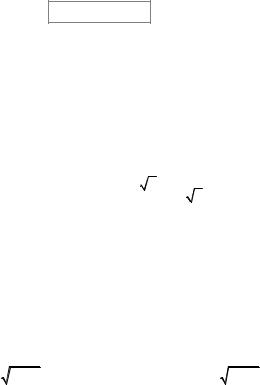
y′ = f ′(u) g′(x).
In other words, the derivative of the composite function y = f (u) where
u = g(x) |
equals the product of the derivative of external function taken with |
|||||||||||||||||||||||||||
respect to internal argument |
u , and that of internal function taken with respect |
|||||||||||||||||||||||||||
to independent variable x. |
|
|
|
|
|
|
|
|
|
|
|
|
|
|
|
|
||||||||||||
If u(x) is the |
|
function |
differentiable |
at |
point x, |
the |
following |
rules are |
||||||||||||||||||||
fulfilled: |
|
|
|
|
|
|
|
|
|
|
|
|
|
|
|
|
|
|
|
|
|
|
|
|
|
|
|
|
|
|
|
|
|
|
|
|
|
|
|
|
|
|
|
|
|
|
|
|
|
|
|
|
|
|
Table 17.2 |
||
|
|
|
|
|
|
|
|
|
|
|
|
|
|
|
|
|
|
|
|
|
|
|
|
|||||
1. (un )′ = nun−1u′ |
|
|
|
|
|
2. ( u )′ = |
1 |
|
u′ |
|
|
|
|
|
|
|||||||||||||
|
|
|
|
|
2 u |
|
|
|
|
|
|
|||||||||||||||||
|
|
|
|
|
|
|
|
|
|
|
|
|
|
|
|
|
|
|
|
|
|
|
|
|
|
|
||
3. (au )′ = au ln a u′ |
|
|
|
4. (eu )′ = eu u′ |
|
|
|
|
|
|
|
|
||||||||||||||||
5. |
(loga u)′ = |
|
1 |
|
|
u′ |
|
|
|
6. |
(ln u)′ = |
1 u′ |
|
|
|
|
|
|
|
|
||||||||
|
u ln a |
|
|
|
|
|
|
|
|
|
|
|
||||||||||||||||
|
|
|
|
|
|
|
|
|
|
|
|
|
|
u |
|
|
|
|
|
|
|
|
||||||
7. |
(sin u)′ = cosu u′ |
|
|
|
8. |
(cosu)′ = − sin u u′ |
|
|||||||||||||||||||||
9. (tg u)′ = |
|
|
1 |
|
|
|
u |
′ |
|
|
|
10. |
(ctg u)′ = − |
|
1 |
u′ |
|
|||||||||||
cos2 u |
|
|
|
sin2 u |
|
|||||||||||||||||||||||
11. |
(arcsin u)′ = |
|
|
|
1 |
|
|
u′ |
|
12. |
(arccos u)′ = − |
1 |
|
|
|
u′ |
||||||||||||
|
|
|
|
|
|
1− u2 |
||||||||||||||||||||||
|
|
|
|
|
|
|
|
|
|
1− u2 |
|
|
|
|
|
|
|
|
|
|
|
|||||||
|
|
(arctg u)′ |
1 |
|
u′ |
|
|
|
|
|
(arcctg u)′ = − |
1 |
|
u′ |
|
|||||||||||||
13. |
= |
|
|
|
|
|
14. |
|
|
|
||||||||||||||||||
1+ u2 |
|
|
|
1+ u2 |
|
|||||||||||||||||||||||
15. (sh u)′ = ch u u′ |
|
|
|
16. |
(ch u)′ = sh u u′ |
|
||||||||||||||||||||||
17. |
(th u)′ = |
|
1 |
|
u |
′ |
|
|
|
18. |
(cth u)′ = − |
|
1 |
|
u′ |
|
||||||||||||
ch2u |
|
|
|
sh2u |
|
|||||||||||||||||||||||
Micromodule 17
EXAMPLES OF PROBLEMS SOLUTION
Example 1. Using the definition of the derivative, find the derivative of the function y = x2 .
Solution. According to the definition of the derivative, we have
201
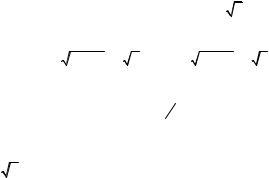
(x2 )' = lim |
|
f (x + |
x) − f (x) |
= lim |
(x + |
x)2 − x2 |
= |
|||
x→0 |
x |
x→0 |
x |
|||||||
|
|
|
|
|||||||
= lim x→0 |
|
x2 + 2x x + |
x2 − x2 |
= lim x→0 (2x + |
x) = 2x |
|
||||
|
|
x |
|
|
||||||
|
|
|
|
|
|
|
|
|
||
Example 2. Find the derivative of the function y = cos x by the definition. Solution. We write the increment of function
|
|
|
|
|
|
|
|
|
y = cos(x + |
x) − cos x. |
|
|
|
|
||||||||||||||
Remember the first honorable limit |
|
|
|
|
|
|
|
|
|
|
|
|
|
|
|
|
|
|||||||||||
|
|
|
|
|
|
|
|
|
lim x→0 |
sin x |
= 1 |
|
|
|
|
|
|
|
|
|||||||||
|
|
|
|
|
|
|
|
|
|
|
|
|
|
|
|
x |
|
|
|
|
|
|
|
|
|
|
|
|
as well as formula |
|
|
|
|
|
|
|
|
|
|
|
|
|
|
|
|
|
|
|
|
|
|
|
|
|
|||
|
|
|
|
|
cos x − cos y = −2sin |
x − y |
sin |
x + y |
. |
|
|
|
|
|||||||||||||||
|
|
|
|
|
|
|
|
|
|
|
|
|
||||||||||||||||
|
|
|
|
|
|
|
|
|
|
|
|
|
|
|
|
2 |
|
|
|
2 |
|
|
|
|
|
|||
Then |
|
|
|
|
|
|
|
|
|
|
|
|
|
|
|
|
|
|
|
|
|
|
|
|
|
|
|
|
|
|
|
|
|
|
|
|
|
|
|
|
|
|
|
|
|
|
|
|
|
|
|
|
|
x |
|
x |
|
(cos x) |
' |
= lim |
x→0 |
cos(x + x) − cos x |
= lim x→0 |
−2sin |
2 sin(x |
+ 2 ) |
= |
|||||||||||||||||||
|
|
|
|
x |
|
|
|
|
|
|
|
|
x |
|
||||||||||||||
|
|
|
|
|
|
|
|
|
|
|
|
|
|
|
|
|
|
|
|
|
|
|
|
|
|
|
||
|
|
|
|
|
− sin |
x |
|
|
|
|
|
|
|
|
|
x) = −1 sin x = − sin x. |
||||||||||||
= lim |
|
|
2 |
lim |
|
|
sin(x + |
|
||||||||||||||||||||
x→0 |
|
x |
|
x |
→0 |
|||||||||||||||||||||||
|
|
|
|
|
|
|
|
|
|
|
|
2 |
|
|
|
|
|
|
|
|
||||||||
|
|
|
|
|
|
2 |
|
|
|
|
|
|
|
|
|
|
|
|
|
|
|
|
|
|
|
|
|
|
Example 3. Find the derivative of the function |
y = 3 x |
at point |
x = 0 . |
|||||||||||||||||||||||||
Solution. We have |
|
|
|
|
|
|
|
|
|
|
|
|
|
|
|
|
|
|
|
|
|
|
|
|||||
|
|
|
|
lim |
3 |
x + x −3 |
x |
= |
lim |
3 |
0 + x −3 |
0 |
= |
|
|
|||||||||||||
|
|
|
|
|
|
|
x |
|
|
|
|
|
|
|
|
|
x |
|
|
|
||||||||
|
|
|
|
x→0 |
|
|
|
|
|
|
|
|
|
|
x→0 |
|
|
|
|
|
|
|||||||
|
|
|
|
|
|
|
|
|
= lim |
|
|
|
|
1 |
= ∞. |
|
|
|
|
|||||||||
|
|
|
|
|
|
|
|
|
|
|
|
|
|
|
|
|
|
|
||||||||||
|
|
|
|
|
|
|
|
|
|
x→0 ( x)23 |
|
|
|
|
|
|
|
|
|
|
|
|||||||
So the limit increases infinitely when |
x → 0. Therefore the derivative of the |
|||||||||||||||||||||||||||
function y = 3 x |
|
at point |
x = 0 does not exist. It might be said, as well, that |
|||||||||||||||||||||||||
there exists no derivative of continuous function |
y =| x | |
within the complete |
||||||||||||||||||||||||||
number scale at point |
|
x = 0. Consequently, if a function is discontinuous at |
||||||||||||||||||||||||||
pointі x, it does not follow necessarily that it has the derivative at this point.
202

However, if the function is differentiable (if it has the derivative) at point x , it is continuous at this point then.
Find the derivatives of the functions:
Example 4. y = 4x5 −3x4 +1 .
Solution.
y′ = (4x5 − 3x4 + 1)′ = (4x5 )′ − (3x4 )′ + (1)′ = 4(x5 )′ − 3(x4 )′ = 4 5x4 − 3 4x3 = 20x4 − 12x3.
Example 5. y = |
|
3 |
|
|
− |
|
1 |
. |
|
|
|
|
|
|
|
|
|
|
|
|
|
|
|
|
|
|
|
|
|
|
|
|||||||
|
x2 |
|
|
|
|
|
|
|
|
|
|
|
|
|
|
|
|
|
|
|
|
|
|
|
|
|
|
|
||||||||||
Solution. |
|
|
|
|
|
|
|
x |
|
|
|
|
|
|
|
|
|
|
|
|
|
|
|
|
|
|
|
|
|
|
|
|
||||||
|
|
|
|
|
|
|
|
|
|
|
|
|
|
|
|
|
|
|
|
|
|
|
|
|
|
|
|
|
|
|
|
|
|
|
|
|||
|
3 |
|
|
|
|
1 |
|
|
|
|
−2 |
|
|
|
−1 |
2 )′ = |
|
|
−2 |
)′ − (x |
−1/ 2 |
)′ = |
|
|
|
|||||||||||||
y ' = |
|
|
|
|
− |
|
|
|
= (3x |
|
− x |
|
|
3(x |
|
|
|
|
|
|
||||||||||||||||||
|
|
2 |
|
|
|
|
|
|
|
|
|
|
|
|
||||||||||||||||||||||||
|
x |
|
|
|
|
|
|
|
|
x |
|
|
|
|
|
|
|
|
|
|
|
|
|
|
|
|
|
|
6 |
|
|
1 |
|
|||||
= 3 (−2)x−2−1 − (−1/ 2)x−1/ 2−1 = = −6x−3 + (1/ 2)x−3/ 2 |
= − |
|
+ |
. |
||||||||||||||||||||||||||||||||||
|
x3 |
|
||||||||||||||||||||||||||||||||||||
|
|
|
|
|
|
|
|
|
|
|
|
|
|
|
|
|
|
|
|
|
|
|
|
|
|
|
|
|
|
|
|
|
|
2 x3 |
||||
Example 6. y = |
|
|
x2 |
. |
|
|
|
|
|
|
|
|
|
|
|
|
|
|
|
|
|
|
|
|
|
|
|
|
|
|
||||||||
sin x |
|
|
|
|
|
|
|
|
|
|
|
|
|
|
|
|
|
|
|
|
|
|
|
|
|
|
||||||||||||
Solution. |
|
|
|
|
|
|
|
|
|
|
|
|
|
|
|
|
|
|
|
|
|
|
|
|
|
|
|
|
||||||||||
|
|
|
|
|
|
|
|
|
|
|
|
|
|
|
|
|
|
|
|
|
|
|
|
|
|
|
|
|
|
|
|
|
|
|
|
|||
x2 |
|
|
′ |
|
|
(x2 )′ sin x − x2 (sin x)′ |
|
2x sin x − x2 cos x |
|
|
||||||||||||||||||||||||||||
y ' = |
|
|
|
= |
|
|
|
|
|
(sin x) |
2 |
|
|
|
= |
|
|
sin |
2 |
x |
|
|
|
|
|
. |
|
|||||||||||
|
|
|
|
|
|
|
|
|
|
|
|
|
|
|
|
|
|
|
||||||||||||||||||||
sin x |
|
|
|
|
|
|
|
|
|
|
|
|
|
|
|
|
|
|
|
|
|
|
|
|
|
|||||||||||||
Example 7. y = arcsin x tg x. |
|
|
|
|
|
|
|
|
|
|
|
|
|
|
|
|
|
|
|
|
|
|||||||||||||||||
Solution. |
|
|
|
|
|
|
|
|
|
|
|
|
|
|
|
|
|
|
|
|
|
|
|
|
|
|
|
|
|
|
|
|
|
|
|
|
||
|
|
|
|
|
y |
′ |
= |
|
(arcsin x tgx) |
′ |
|
|
|
|
|
′ |
|
|
|
|
|
|
|
|
|
|
|
|||||||||||
|
|
|
|
|
|
|
|
|
= (arcsin x) tgx + |
|
|
|
|
|
|
|
|
|
||||||||||||||||||||
+ arcsin x (tg x) |
′ |
|
|
|
1 |
|
|
|
|
|
|
|
|
|
|
|
1 |
|
|
|
|
|
|
|
||||||||||||||
= |
|
1− x2 tg x + arcsin x cos2 x . |
|
|
|
|||||||||||||||||||||||||||||||||
|
|
|
|
|
||||||||||||||||||||||||||||||||||
Example 8. Find |
|
y' (0), |
if |
|
y = ex x . |
|
|
|
|
|
|
|
|
|
|
|
|
|
|
|
||||||||||||||||||
Solution. y′ = (ex )x + ex ; |
y '(o) = e0 0 + e0 = 1. |
|
|
|
|
|
|
|
|
|
|
|
|
|
||||||||||||||||||||||||
Applying the rule of differentiation of composite function, find the derivatives of the functions:
Example 9. y = (x2 +1)3 .
Solution. Let us make a designation u = x2 +1, then y = (u(x))3 . By the rule of differentiation of the composite function, it follows
y′ = (u3 )′ = 3u2u′ = 3(x2 + 1)2 (x2 + 1)′ = 3(x2 + 1)2 2x = = 6x(x2 + 1)2 .
203
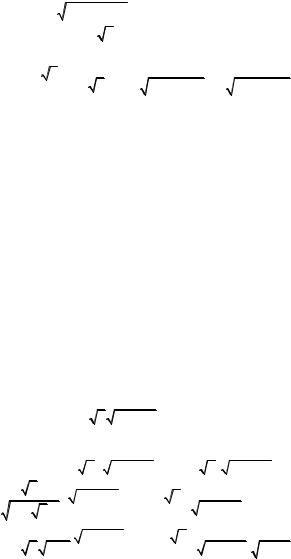
Example 10. y = sin3 x . |
|
|
|
|
|
|
|
|
|
|
|
|
|
|
|
|
|
|
|
|
|
|
|
||||||||
Solution. Let us designate u = sin x , then |
|
y = (u(x))3 . Hence, |
|
||||||||||||||||||||||||||||
|
|
y′ = (u3 )′ = 3u2u′ = 3sin2 x (sin x)′ = 3sin2 x cos x. |
|
|
|||||||||||||||||||||||||||
Example 11. y = |
|
x4 + x3 +1 . |
|
|
|
|
|
|
|
|
|
|
|
|
|
|
|
|
|
|
|
||||||||||
Solution. In this case |
y = |
u |
where u = x4 + x3 +1 . Then |
|
|
|
|
||||||||||||||||||||||||
|
y ' = ( u ) ' = |
1 |
|
u ' = |
(x4 |
+ x3 + 1) ' |
= |
|
4x3 + 3x2 |
|
|
. |
|
||||||||||||||||||
|
2 u |
|
|
|
|
|
|
|
|
|
|
|
|
|
|
|
|
|
|
||||||||||||
|
|
|
|
|
|
|
|
|
2 x4 + x3 + 1 2 x4 + x3 + 1 |
|
|
||||||||||||||||||||
Example 12. y = |
|
|
1 |
. |
|
|
|
|
|
|
|
|
|
|
|
|
|
|
|
|
|
|
|
|
|
|
|
||||
|
|
|
|
|
|
|
|
|
|
|
|
|
|
|
|
|
|
|
|
|
|
|
|
|
|
||||||
|
|
|
cos2 |
x |
|
|
|
|
|
|
|
|
|
|
|
|
|
|
|
|
|
|
|
|
|
|
|
||||
Solution. We write the given function as follows y = cos−2 x . Then |
|||||||||||||||||||||||||||||||
|
|
|
|
|
|
|
|
u = cos x , |
|
y = u−2 , |
|
|
|
|
|
|
|
|
|
|
|||||||||||
|
y′ = (u−2 )′ = −2u−3u′ = −2 cos−3 x(cos x)′ = 2 cos−3 x sin x. |
||||||||||||||||||||||||||||||
Example 13. y = 5sin x . |
|
|
|
|
|
|
|
|
|
|
|
|
|
|
|
|
|
|
|
|
|
|
|
||||||||
Solution. We have the composite function |
y = 5u |
where u = sin x . Then |
|||||||||||||||||||||||||||||
|
y′ = (5u )′ = 5u ln 5 u′ = 5sin x ln 5(sin x)′ = 5sin x ln 5cos x . |
||||||||||||||||||||||||||||||
Example 14. y = tg ex . |
|
|
|
|
|
|
|
|
|
|
|
|
|
|
|
|
|
|
|
|
|
|
|
||||||||
Solution. We have the composite function |
y = tg u , where u = ex . Then |
||||||||||||||||||||||||||||||
|
|
y′ = (tg u)′ = |
|
1 |
|
|
u′ = |
|
|
1 |
|
|
|
(ex )′ |
= |
|
|
|
ex |
|
. |
|
|
|
|||||||
cos2 u |
|
cos2 ex |
cos2 ex |
|
|
|
|||||||||||||||||||||||||
|
|
|
|
|
|
|
|
|
|
|
|
|
|
|
|
|
|
||||||||||||||
Example 15. y = arcsin x |
arcsin x . |
|
|
|
|
|
|
|
|
|
|
|
|
|
|
|
|
|
|||||||||||||
Solution. Having applied the product rule, we get |
|
|
|
|
|
|
|
|
|
|
|||||||||||||||||||||
|
|
y = (arcsin |
x)′ |
arcsin x + arcsin |
|
x( |
arcsin x)′ = |
|
|
||||||||||||||||||||||
|
|
( x)′ |
|
|
|
|
|
|
|
|
|
|
|
|
|
|
|
|
|
1 |
|
|
|
|
|
|
|
|
|
′ |
|
|
1− ( x)2 |
|
arcsin x + arcsin |
x 2 |
arcsin x (arcsin x) |
= |
|||||||||||||||||||||||||
|
|
|
|||||||||||||||||||||||||||||
|
1 |
|
|
|
arcsin x + arcsin |
x |
|
|
|
1 |
|
|
|
|
1 |
|
|
. |
|
||||||||||||
|
|
2 x 1− x |
|
2 |
|
arcsin x |
|
1− x2 |
|
||||||||||||||||||||||
204
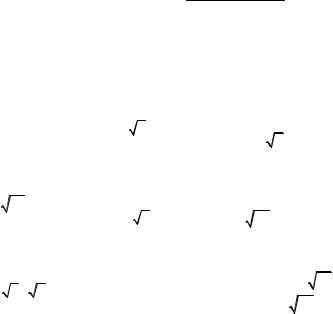
Example 16. y = ln(x2 + 1) . |
|
|
|
|
|
|
Solution. We have the composite function |
y = ln u , where u = x2 +1. |
|||||
Then |
|
|
|
|
|
|
y′ = (ln u)′ = 1 u′ = |
1 |
|
(x2 + 1)′ = |
2x |
. |
|
x2 + 1 |
|
|||||
u |
|
|
x2 + 1 |
|||
Example 17. y = arctg(log2 (x +cos x)) . |
|
|
|
|
|
|
||||||||||||||||
Solution. We have the composite function y = arctg u , where |
u = log2 (x + |
|||||||||||||||||||||
+cos x) is also composite, that is, |
u = log2 w , w = x + cos x . In this case, we |
|||||||||||||||||||||
find the derivative as follows: |
|
|
|
|
|
|
|
|
|
|
|
|
|
|
|
|||||||
|
y |
′ |
= (arctg u) |
′ |
= |
|
1 |
u |
′ |
= |
|
1 |
|
|
|
1 |
|
1 |
|
′ |
||
|
|
|
|
(log2 w)′ = |
|
|
|
|
||||||||||||||
|
|
|
|
|
1 |
+ u2 |
|
|
1 |
+ u2 |
1 |
+ u2 |
|
wln 2 |
|
|
||||||
= |
|
|
(x + cos x)′ |
|
|
|
|
|
|
= |
|
|
|
1− sin x |
|
. |
||||||
(1+ (log2 (x + cos x))2 )(x + cos x) ln 2 |
|
(1+ log22 (x + cos x))(x + cos x) ln 2 |
||||||||||||||||||||
Example 18. y = arcctg2 (x3 − 2) .
Solution.
y′ = 2arcctg(x3 − 2) (arcctg(x3 − 2))′ = − 6x2 arcctg(x3 − 2) . 1+ (x3 − 2)2
Micromodule 17
CLASS AND HOME ASSIGNMENT
Find the derivatives of the functions:
1. |
y = 2 + x − x2 . |
|
2. |
y = 3 4 x . |
|
|
|
3. y = 3 + |
2 |
− x3 . |
|
|
||||||||||||
|
|
|
|
|
|
|
|
|||||||||||||||||
|
|
|
|
|
|
|
|
|
|
|
|
|
|
|
|
|
|
|
|
x |
|
|
|
|
4. |
y = |
1 |
+ |
3 |
|
− x ln x . |
5. |
а) y = arccos x 3x ; |
|
|
b) y = 10x |
/ x . |
|
|
|
|||||||||
|
sin x |
|
|
|
|
|
||||||||||||||||||
|
|
x |
|
|
|
|
|
|
|
|
|
|
|
|
|
|
|
|
|
|
|
|||
6. |
y = 4 tg x 6 x5 . |
|
7. |
а) y = |
cos x |
; |
|
|
|
b) y = |
sin x |
. |
|
|
|
|||||||||
|
|
|
|
|
|
|
|
|
||||||||||||||||
|
|
|
|
|
|
|
|
|
|
x |
|
|
|
|
|
3 x2 |
|
|
|
|
|
|
||
8. |
y = |
arcsin x |
|
. |
9. y = 2x sin x x4 . |
10. y = arctg x +arcctg x . |
||||||||||||||||||
arccos x |
|
|||||||||||||||||||||||
|
|
|
|
|
|
|
|
|
|
|
|
|
|
|
|
|
|
|
|
|
|
|||
11. |
y = (3x + |
x )( |
x − x) . |
|
|
12. а) |
y = |
1 |
− x5 |
y = |
2 − 7 |
x2 |
||||||||||||
|
|
|
|
|
; b) |
|
|
. |
||||||||||||||||
|
|
|
|
|
7 x2 |
|
||||||||||||||||||
|
|
|
|
|
|
|
|
|
|
|
|
|
|
x5 + 1 |
|
|
|
+ 2 |
|
|||||
|
|
|
|
|
|
|
|
|
|
|
|
|
|
|
|
|
|
|
|
|
|
|
205 |
|
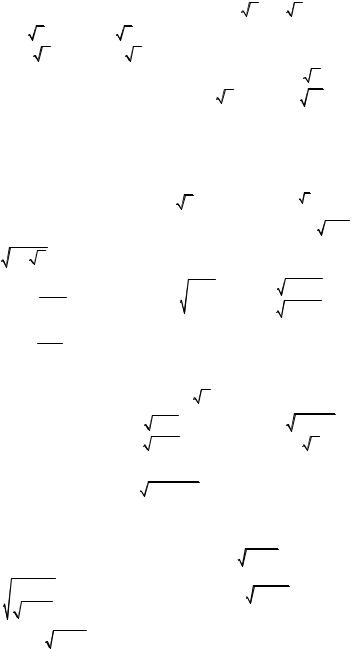
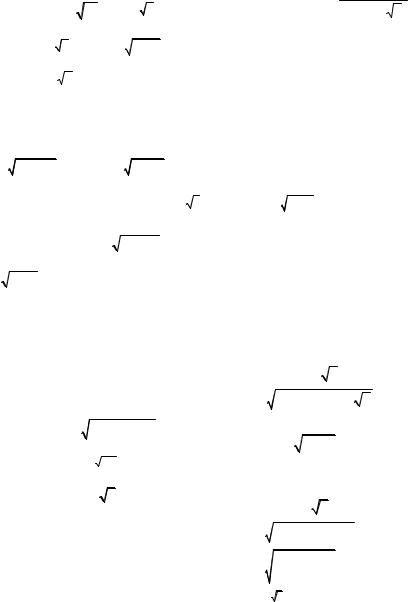
|
|
|
|
|
|
|
|
|
|
|
|
|
|
|
|
|
|
|
|
|
|
|
|
Answers |
|
|
|
|
|
|
|
|
|
|
|
|
|
|
|
|
|
|
|
|
|
|
|
||||||
|
1. |
1− 2x. |
2. |
|
|
3 |
. 3. |
− |
1 |
|
|
−3x2 . |
4. − |
1 |
|
− 3 |
cos x |
|
− ln x −1. |
6. 12x + 5sin 2x . |
|||||||||||||||||||||||||||||||||
|
|
|
|
|
|
|
|
|
|
|
|
44 x3 |
|
|
|
x |
x |
|
|
|
|
|
|
|
|
x2 |
|
|
sin2 x |
|
|
|
|
|
|
|
|
|
|
3cos2 x6 x |
|
|
|||||||||||
7. а) |
− |
2xsin x + cos x . |
8. |
|
|
|
|
|
π |
|
|
|
|
. |
9. |
|
2x x3(ln 2 xsin x + xcos x + 4sin x) . |
||||||||||||||||||||||||||||||||||||
|
|
|
|
|
|
|
|
|
|
|
|
|
|||||||||||||||||||||||||||||||||||||||||
|
|
|
|
|
|
|
|
|
x |
x |
|
|
|
2 1− x2 arccos2 x |
|
|
|
|
|
|
|
|
|
|
|
|
|
|
|
|
|
|
|
|
|
|
|
|
|
||||||||||||||
10. а) |
0. |
|
11. |
3 |
x − 6x + 1 . |
12. а) |
|
|
− 10x 4 |
. |
13. |
8x 7 . |
|
14. |
|
4x3 − 24x 2 + 40x − 19 . |
|||||||||||||||||||||||||||||||||||||
|
(x5 + 1)2 |
|
|
||||||||||||||||||||||||||||||||||||||||||||||||||
|
|
|
|
|
|
|
|
|
|
|
|
|
|
|
|
|
|
|
|
|
|
|
|
|
|
|
|
|
|
|
|
|
|
|
|
|
|
|
|
|
|
|
|
|
|
||||||||
19. |
|
|
|
1 |
|
− |
|
|
1 |
|
. |
21. 15(3x + 2)4 . |
|
22. −4cos3 xsin x. |
|
23. |
|
|
|
1 |
|
|
|
. |
|||||||||||||||||||||||||||||
|
|
x ln 2 |
|
|
|
x ln2 x |
|
|
|
|
|
|
|
|
|
|
|
|
|
|
|
|
|
|
|
|
|
|
|
|
|
|
|
|
|
|
|
|
x ln 3 cos2 (log3 x) |
||||||||||||||
24. |
|
|
|
|
1 |
|
|
|
. |
|
|
25. − |
1 |
|
|
|
|
|
. |
|
|
27. |
2arctg x ln 2 |
. |
|
|
|
28. ln sin 2x + 2xctg2x . |
|||||||||||||||||||||||||
|
x 1−ln2 x |
|
|
|
|
|
|
|
|
|
|
|
1 + x2 |
|
|
|
|
||||||||||||||||||||||||||||||||||||
|
|
|
|
|
|
|
|
2 x −x2 |
|
|
|
|
|
|
|
|
|
|
|
|
|
|
|
|
|
|
|
|
|
|
|
|
|||||||||||||||||||||
31. −18sin5(cos3x)cos(cos3x)sin 3x. |
33. |
|
|
1 |
|
|
. |
34. а) |
|
|
|
−1 |
. |
35. −chcos |
|
x |
× |
||||||||||||||||||||||||||||||||||||
|
|
|
|
|
|
|
|
|
|
|
|
|
|
|
|
|
|
|
|
|
|
|
|
|
|
x(1+ x) |
|
|
|
|
|
|
|
2 1− x2 |
|
|
|
|
x |
+ 1 |
|
|
|||||||||||
×sin |
|
x |
|
/(1+ x)2 . |
36. |
|
−earccosln x |
|
. |
39. |
sin ln ex − 1 |
|
2e2x |
|
. 44. |
|
sin2 x (3+ sin2 x) . |
||||||||||||||||||||||||||||||||||||
x + 1 |
|
|
1 − ln2 x |
|
|
|
|
|
|
|
|||||||||||||||||||||||||||||||||||||||||||
|
|
|
|
|
|
|
|
|
|
|
|
x |
|
|
|
|
|
|
|
|
ex + 1 1− e2x |
|
|
|
|
|
|
|
cos5 x |
|
|
|
|
||||||||||||||||||||
48. |
|
|
|
1 |
|
|
|
. |
|
|
|
|
|
|
|
|
|
|
|
|
|
|
|
|
|
|
|
|
|
|
|
|
|
|
|
|
|
|
|
|
|
|
|
|
|
|
|
|
|
|
|
|
|
|
|
|
|
|
|
|
|
|
|
|
|
|
|
|
|
|
|
|
|
|
|
|
|
|
|
|
|
|
|
|
|
|
|
|
|
|
|
|
|
|
|
|
|
|
|
|
|
|
|
|
|||
|
|
|
|
x2 − 1 |
|
|
|
|
|
|
|
|
|
|
|
|
|
|
|
|
|
|
|
|
|
|
|
|
|
|
|
|
|
|
|
|
|
|
|
|
|
|
|
|
|
|
|
|
|
||||
|
|
|
|
|
|
|
|
|
|
|
|
|
|
|
|
|
Micromodule 17 |
|
|
|
|
|
|
|
|
|
|
|
|
|
|
|
|
|
|
|
|||||||||||||||||
|
|
|
|
|
|
|
|
|
|
|
|
|
|
|
SELF-TEST ASSIGNMENTS |
|
|
|
|
|
|
|
|
|
|
|
|
|
|
|
|||||||||||||||||||||||
|
17.1. Find the derivatives of the first order y = f (x). |
|
|
|
|
|
|
|
|
||||||||||||||||||||||||||||||||||||||||||||
|
17.1.1. а) y = cos2 x + sin(tg x) ; |
|
|
|
b) |
y = ln2 arcsin |
|
x ; |
|
|
|
|
|||||||||||||||||||||||||||||||||||||||||
|
|
|
|
|
|
|
|
c) |
y = 2sin x+cos2 x ; |
|
|
|
|
|
|
|
|
|
|
|
d) |
y = 5 (2x +1) arcctg x . |
|
|
|
|
|||||||||||||||||||||||||||
|
17.1.2. а) |
y = 3 ctg x + tg x2 |
; |
|
|
|
|
|
|
b) |
y = log3 |
|
|
|
x |
|
|
|
; |
|
|
|
|
||||||||||||||||||||||||||||||
|
|
|
|
|
|
|
|
|
|
|
|
|
|
|
|
|
|
|
|
||||||||||||||||||||||||||||||||||
|
|
|
|
|
|
|
|
|
|
|
|
|
|
|
|
|
|
|
|
|
|
|
|
|
|
|
|
|
|
|
|
|
|
|
|
|
|
|
|
|
1−x2 |
|
|
|
|
||||||||
|
|
|
|
|
|
|
|
c) |
y = 10 |
ln x |
3tan x ; |
|
|
|
|
|
|
|
|
d) |
y = 5 arctg(ln2 x) − 1 . |
|
|
|
|
||||||||||||||||||||||||||||
|
17.1.3. а) |
y = sin |
|
x − 2 sin3 x ; |
|
|
|
b) y = ln arccos |
1 |
|
; |
|
|
|
|
|
|||||||||||||||||||||||||||||||||||||
|
|
|
|
|
|
|
|
|
|
|
|
||||||||||||||||||||||||||||||||||||||||||
|
|
|
|
|
|
|
|
|
|
|
|
|
|
|
|
|
|
|
|
|
|
|
|
|
|
|
|
|
|
|
|
|
|
|
|
|
|
|
|
|
|
|
|
|
x |
|
|
|
|
||||
|
|
|
|
|
|
|
|
c) |
y = earctg x cos 2x ; |
|
|
|
|
|
|
|
|
d) |
y = 4 log3 sin(x3 + 1) . |
|
|
|
|
||||||||||||||||||||||||||||||
|
17.1.4. а) |
y = x2 /(1+ cos2 2x) ; |
|
|
|
b) |
y = 3 ln cos |
x − 2 |
; |
|
|
|
|
||||||||||||||||||||||||||||||||||||||||
|
|
|
|
|
|
|
|
|
|||||||||||||||||||||||||||||||||||||||||||||
|
|
|
|
|
|
|
|
|
|
|
|
|
|
|
|
|
|
|
|
|
|
|
|
|
|
|
|
|
|
|
|
|
|
|
|
|
|
|
|
5 |
|
|
|
|
|
|
|
|
|||||
|
|
|
|
|
|
|
|
b) |
y = ln sin(3x x2 ) ; |
|
|
|
|
|
|
|
|
d) |
y = 3 x |
cos3 (tg x) . |
|
|
|
|
|||||||||||||||||||||||||||||
207
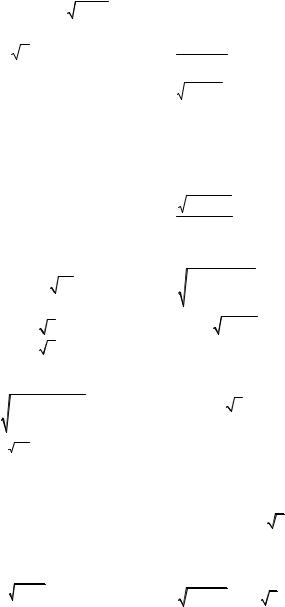
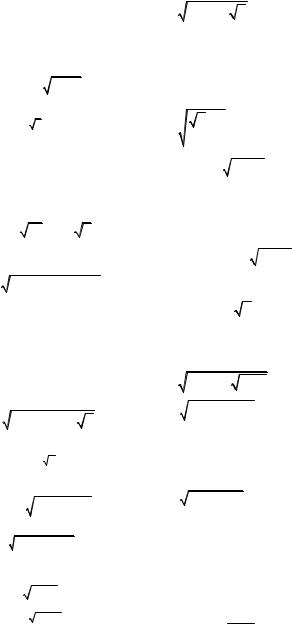
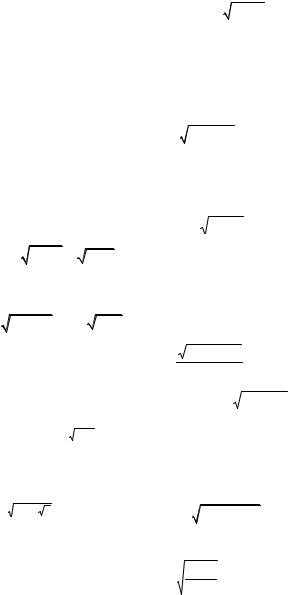
17.1.23. а) |
y = |
|
|
|
|
|
|
|
|
x2 |
|
|
|
|
|
|
|
; |
b) |
y = x ln(x + 1−x2 ) ; |
||||||||||||||||||
|
|
|
|
|
|
|
|
|
|
|
|
|
|
|
|
|
|
|
||||||||||||||||||||
|
|
|
sin2 x −cos(x2 ) |
|
|
|
|
|
|
|
|
|
|
|
|
|
|
|
|
|||||||||||||||||||
c) |
y = 2(x3−2) / sin x ; |
|
|
|
|
|
|
|
d) |
y = tg2 |
|
|
1 |
|
−5 ctg4 2x . |
|||||||||||||||||||||||
|
|
|
|
|
|
|
x2 +1 |
|||||||||||||||||||||||||||||||
|
|
|
|
|
|
|
|
|
|
|
|
|
|
|
|
|
|
|
|
|
|
|
|
|
|
|
|
|
|
|
|
|
|
|||||
17.1.24. а) |
y = cos |
sin x |
|
; |
|
|
|
|
|
|
|
|
b) |
y = sin ln tg x −ln ctg |
x |
; |
||||||||||||||||||||||
|
|
|
|
|
|
x +1 |
|
|
|
|
|
|
|
|
|
|
|
|
|
|
|
|
|
|
|
|
|
|
2 |
|
||||||||
c) |
y = cos 2x /(e |
x |
+ |
3 |
x2 |
) ; |
d) |
y = |
|
1+ln4 x |
. |
|
|
|
|
|||||||||||||||||||||||
|
|
|
|
|
|
|
log5 x |
|
|
|
|
|||||||||||||||||||||||||||
|
|
|
|
|
|
|
|
|
|
|
|
|
|
|
|
|
|
|
|
|
|
|
|
|
|
|
|
|
|
|
|
|
||||||
17.1.25. а) |
y = |
|
|
|
|
|
sin x |
|
|
|
|
; |
|
b) |
y = x2 (cos ln x −sin ln x) ; |
|||||||||||||||||||||||
|
3 cos x +cos3 |
x |
|
|||||||||||||||||||||||||||||||||||
|
|
|
|
|
|
|
|
|
|
|
|
|
|
|
|
|
|
|
|
|
|
|||||||||||||||||
c) |
y = 5 |
4x |
|
|
|
|
5x |
; |
|
|
|
|
|
|
|
|
d) |
y = x ln( |
|
4 − x |
2 |
) . |
|
|
|
|
||||||||||||
|
|
+4 |
|
|
|
|
|
|
|
|
|
|
|
|
|
|
|
|
|
|
||||||||||||||||||
17.1.26. а) |
y = cos |
|
1+ x3 |
+ cos x ; |
b) |
y = log32 (ln x −logcos x 2) ; |
||||||||||||||||||||||||||||||||
c) |
y = 103x− 4 (3x − 4)10 ; |
d) |
y = arccos |
|
x −1 |
. |
|
|
|
|
||||||||||||||||||||||||||||
|
|
|
|
|
|
|||||||||||||||||||||||||||||||||
|
|
|
|
|
|
|
|
|
|
|
|
|
|
|
|
|
|
|
|
|
|
|
|
|
|
|
|
|
|
|
x |
|
|
|
|
|
|
|
17.1.27. а) |
y = 3 tg(x / 3) +cos |
|
|
|
sin x ; |
b) |
y = log33 log22 ln(5x −2) ; |
|||||||||||||||||||||||||||||||
c) |
y = 3sin2 3x |
|
+ |
3cos x |
|
|
; |
|
d) |
y = |
arcsin ln x . |
|
|
|
|
|||||||||||||||||||||||
|
|
|
|
|
|
|
|
|
||||||||||||||||||||||||||||||
|
|
|
|
|
|
|
|
|
|
|
|
|
|
|
|
x |
|
|
|
|
|
|
|
|
|
|
|
x 2 |
|
|
|
|
|
|
||||
17.1.28. а) |
y = cos |
6 |
|
3 |
|
+ |
|
|
|
|
|
4 |
|
|
|
; |
|
b) |
y = ln(sin |
2 |
|
x + |
|
sin |
3 |
ln x ) ; |
||||||||||||
|
|
x |
|
x cos x |
|
|
|
|
|
|||||||||||||||||||||||||||||
|
|
|
|
|
|
|
|
|
|
|
|
|
|
|
|
|
|
|
|
|
|
|
|
|
|
|
|
|
||||||||||
c) |
y = x cos(2arctan |
1− x2 |
) ; |
d) 102x−5 (7x2 − 1)8 . |
|
|
|
|||||||||||||||||||||||||||||||
17.1.29. a) |
y = |
cos3 (x 2 − 1/ x 2 ) |
; |
b) |
y = ln cos log7 ctg ln x ; |
|||||||||||||||||||||||||||||||||
|
|
|
|
|
cos x |
|
|
|
|
|
|
|
||||||||||||||||||||||||||
|
|
|
|
|
|
|
|
|
|
|
|
|
|
|
|
|
|
|
|
|
|
|
|
|
|
|
|
|
|
|||||||||
c) |
y = e5 arctan |
|
x |
|
/ ln x ; |
|
d) |
y = tg |
sin 2x + x3 . |
|||||||||||||||||||||||||||||
17.1.30. а) |
y = x sin3 5x +cos ec2 x ; |
b) |
y = ln3 sin(x cos x) ; |
|||||||||||||||||||||||||||||||||||
c) |
y = arcsin 8sin x |
/ 2cos x ; |
d) |
y = 3 |
tan x . |
|
|
|
|
|
|
|||||||||||||||||||||||||||
|
|
|
|
|
|
|
|
|
|
|
|
|
|
|
|
|
|
|
|
|
|
|
|
|
|
|
x ln x |
|
|
|
|
|
|
|||||
210
